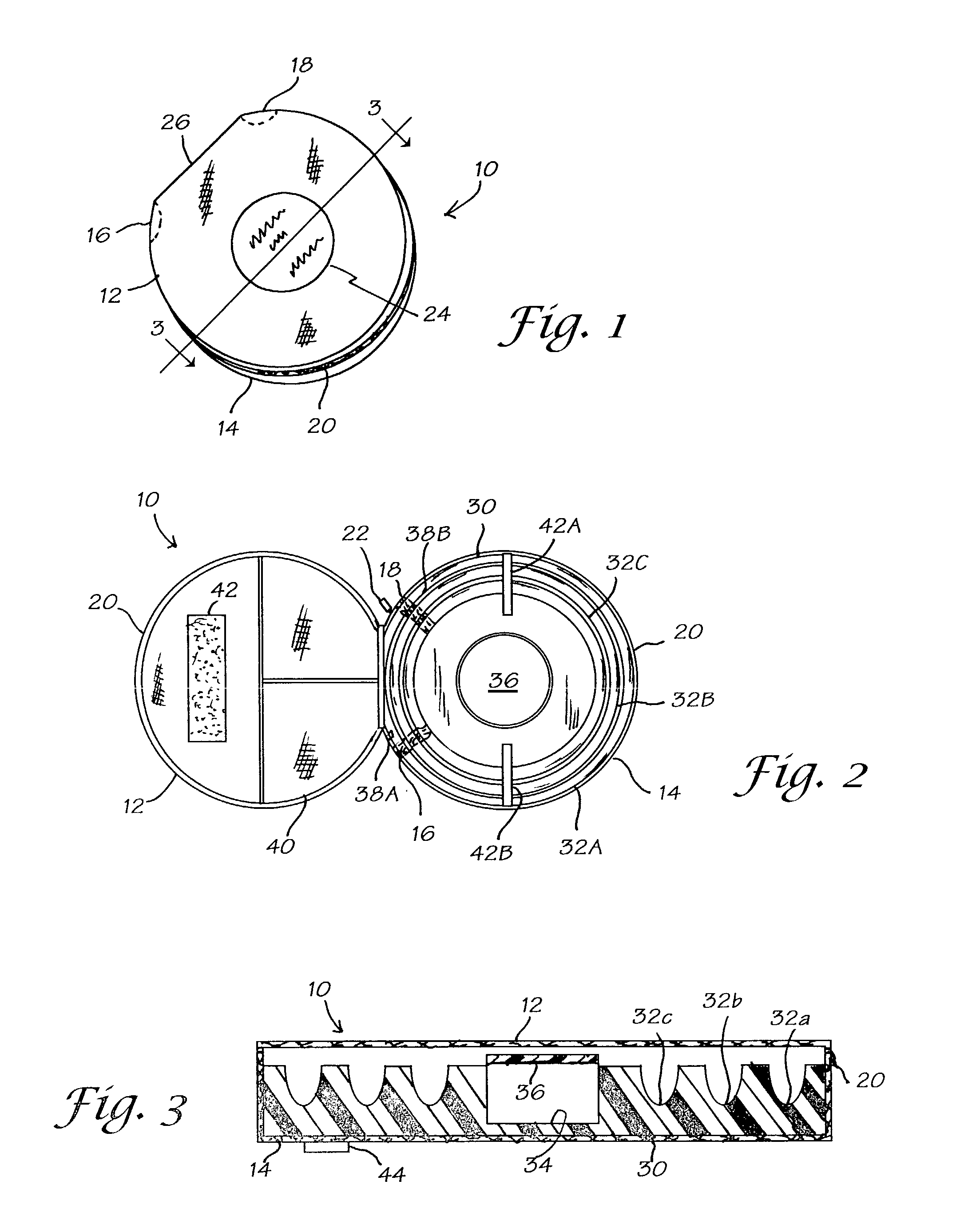Cable storage device
- Summary
- Abstract
- Description
- Claims
- Application Information
AI Technical Summary
Benefits of technology
Problems solved by technology
Method used
Image
Examples
Embodiment Construction
[0031]In the following detailed description of the invention, reference numerals are used to identify structural elements, portions of elements, surfaces or areas in the drawings, as such elements, portions, surfaces or areas may be further described or explained by the entire written specification. For consistency, whenever the same numeral is used in different drawings, it indicates the same element, portion, surface or area as when first used. Unless otherwise indicated, the drawings are intended to be read together with the specification, and are to be considered a portion of the entire written description of this invention as required by 35 U.S.C. § 112. As used herein, the terms “horizontal,”“vertical,”“left,” right,”“up,”“down,” as well as adjectival and adverbial derivatives thereof, refer to the relative orientation of the illustrated structure as the particular drawing figure faces the reader.
[0032]Referring now to FIGS. 1–3, there is shown a cable storage device 10 accord...
PUM
 Login to View More
Login to View More Abstract
Description
Claims
Application Information
 Login to View More
Login to View More - R&D
- Intellectual Property
- Life Sciences
- Materials
- Tech Scout
- Unparalleled Data Quality
- Higher Quality Content
- 60% Fewer Hallucinations
Browse by: Latest US Patents, China's latest patents, Technical Efficacy Thesaurus, Application Domain, Technology Topic, Popular Technical Reports.
© 2025 PatSnap. All rights reserved.Legal|Privacy policy|Modern Slavery Act Transparency Statement|Sitemap|About US| Contact US: help@patsnap.com



